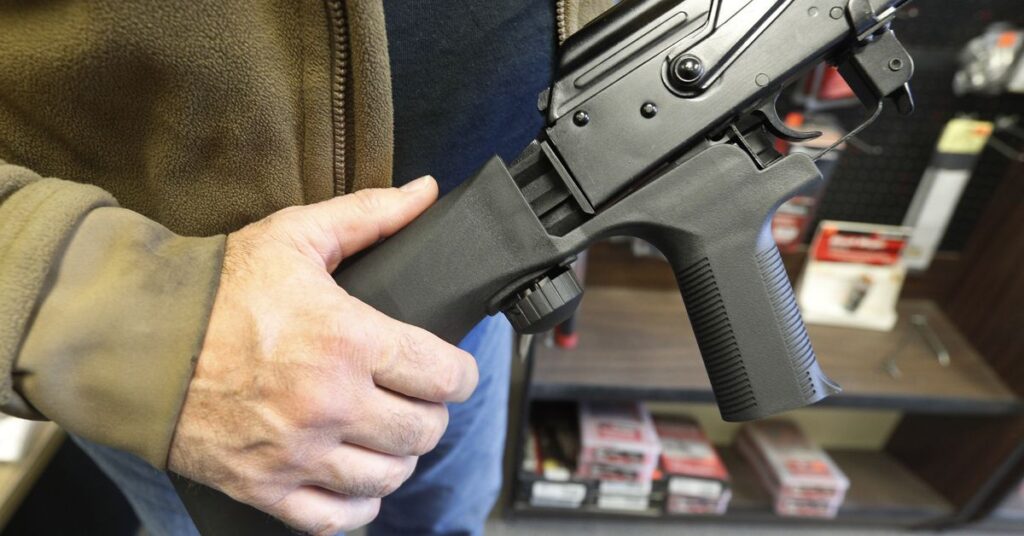On February 28, the Supreme Court will hear a case that could effectively make it legal for civilians to own automatic weapons capable of firing as many as nine bullets every second.
The case, known as Garland v. Cargill, involves bump stocks, devices that use a gun’s recoil to repeatedly fire the weapon. Bump stocks cause a semiautomatic firearm’s trigger to buck against the shooter’s finger, as the gun’s recoil causes it to jerk back and forth — repeatedly “bumping” the trigger and causing the gun to fire as if it were fully automatic.
A “semiautomatic” weapon refers to a gun that loads a bullet into the chamber or otherwise prepares itself to fire again after discharging a bullet, but that will not fire a second bullet until the shooter pulls the trigger a second time. An “automatic” weapon, by contrast, will fire a continuous stream of bullets — though the shooter often must hold down the trigger to do so.
The Trump administration issued a regulation banning bump stocks in 2018, after a gunman used one to kill 60 people and wound hundreds more during a country music festival in Las Vegas. A 1986 law makes it a crime to own a “machinegun,” and the Trump administration determined that this law extends to bump stocks.
But federal courts have divided on whether federal law defines the term “machinegun” broadly enough to include bump stocks, and the law does appear to be genuinely ambiguous on this point.
If this case, which was brought by an individual gun owner who wants to own bump stocks, had arisen just a few years ago, it would have been a slam dunk victory for the government. The Supreme Court’s decision in Chevron v. Natural Resources Defense Council (1984) generally calls for judges to defer to a federal agency’s reading of an ambiguous federal law, so Chevron calls for the courts to defer to the government’s interpretation of what constitutes a “machinegun.”
But the Court is likely to overrule Chevron in a…
Read the full article here





